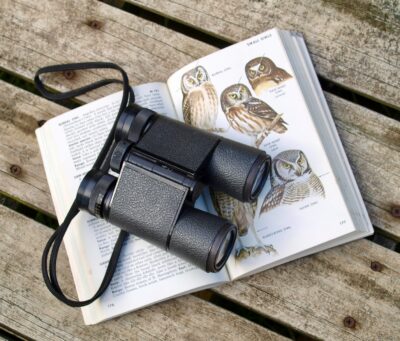Bird-watching tourism (a.k.a. avitourism) is travel where the primary motive is to observe birds in their natural habitats; it sits within nature/wildlife tourism and overlaps with adventure and eco-tourism. European market guidance segments buyers into casual, enthusiastic, and hardcore birders—each with distinct trip depth and service needs.
Executive snapshot
- Scale & momentum. Wildlife tourism overall generated ~US$344B in direct GDP impact pre-pandemic; bird-watching is a large and fast-growing slice of this wider category. (researchhub.wttc.org, Nature4Climate)
- Participation (anchor market). In the United States, ~96 million people engage in birding; recent analyses tied to the 2022 national survey show >$100B annual spend by birders on trips & equipment. (The Wildlife Society)
- Digital flywheel. The eBird community just passed ~2 billion bird sightings globally, underscoring explosive data-driven engagement; Merlin Bird ID usage and citizen-science events (Global Big Day, GBBC) continue to set records and broaden the funnel. (news.cornell.edu, Facebook, Great Backyard Bird Count)
- Growth outlook. Independent market trackers peg the dedicated bird-watching tourism market at ~US$63B (2023) with ~6–6.5% CAGR this decade (range varies by firm)—indicative rather than definitive, but directionally consistent with the surge in participation. (Verified Market Research, Market.us, Grand View Research)
Demand for Bird-watching tourism: who’s traveling and why
- Europe as a key source. The UK, Netherlands, Germany, Sweden are the largest European source markets; a sizable share of European wildlife travelers want birding as a core activity. Post-COVID, more millennials have entered the segment, aided by social media and apps. (cbi.eu)
- North America & apps. The US is the anchor demand market by volume and spend; national data show large cohorts of backyard birders plus tens of millions traveling specifically to watch wildlife (including birds). (Birds, Cornell Lab of Ornithology)
- Enthusiast behavior. Segmentation matters: casual birders accept blended wildlife trips; hardcore birders prioritize species targets, pre-dawn starts, and flexible itineraries over lodging frills. (cbi.eu)
Digital adoption indicators
- eBird & events. Global Big Day 2025: ~69k participants from 200+ countries, 7,900+ species logged—numbers that reinforce truly global engagement. (Facebook)
- Merlin Bird ID. Cornell’s Merlin app (sound/photo ID, offline packs) is now a mainstream on-ramp for beginners and a field tool for travelers. (merlin.allaboutbirds.org, Help Center)
Supply & value chain of Bird-watching tourism
- Core players. Local lodges & hides; specialist tour operators/guides; destination marketing orgs (DMOs); conservation NGOs; national parks/permits; optics/gear brands; platforms (eBird, Merlin).
- Job creation & inclusion. Training community bird guides and curating birder-friendly routes spread spend into rural areas (notably in South Africa’s avitourism programs). (birdlife.org.za)
Economics of Bird-watching tourism: what the money looks like
- Macro envelope. Wildlife tourism ~US$343.6B globally (direct GDP). Bird-watching’s precise global share is not separately reported by UNWTO/WTTC, but independent trackers estimate a dedicated market of ~US$63B in 2023 growing at ~6%+ CAGR through 2030–33. Treat these as directional (methodologies vary). (researchhub.wttc.org, Nature4Climate, Verified Market Research, Market.us)
- Country-level spend signals.
- United States. Addendum to the 2022 National Survey shows ~96M birders and >$100B in trip/equipment outlays; broader “wildlife watching” contribution estimated at ~US$250B to the US economy. (The Wildlife Society, fishwildlife.org)
- Australia. Tourism Research Australia data (reported by ABC) indicate A$2.6B in international visitor spend on bird-related travel (year to June 2024) plus A$636M from domestic overnights—up ~53% vs 2021. (ABC)
- Event economics. Ohio’s Biggest Week in American Birding draws tens of thousands each May; reported local economic impact estimates range US$40–53M/year. (great-lakes-north-america.com, birdingwire.com)
Regional snapshots & case studies
- Latin America (Colombia, Costa Rica).
- Colombia (world leader in bird species) has seen a post-peace-accord boom in birding travel; studies demonstrate significant willingness-to-pay and benefits from bird-based tourism; national promotion has centered birding routes and fairs. (conservation-strategy.org, ScienceDirect, Procolombia, Vox)
- Costa Rica (900+ species) continues to invest in infrastructure (e.g., new observation towers) to grow avitourism’s rural impact. (Tico Times, ict.go.cr)
- Africa (South Africa). BirdLife South Africa’s GoBirding platform now lists 500+ sites; community-guide programs broaden local income capture—avitourists typically spend more and disperse farther than average nature tourists. (tourismupdate.com, birdlife.org.za)
- Europe (UK/Spain).
- The UK remains Europe’s largest source market; RSPB cites ~1.2M members, underscoring depth of the hobby. (cbi.eu, rspb.org.uk)
- Spain’s Extremadura Birdwatching Fair (FIO) is the largest in southern Europe (2023 attendance ~18,500; 2025 edition expanded exhibitors), illustrating growing trade and consumer interest. (spain.info, juntaex.es, Cadena SER)
- Asia (India). Participation is surging: GBBC India 2025 logged 66k+ checklists from 6,500 eBirders and 1,086 species (≈79% of India’s list) in just four days. Legacy sites like Keoladeo draw six-figure annual visitors (park revenue ₹2 crore in 2016–17), pointing to durable domestic demand. (Bird Count India, Hindustan Times)
- North America (United States). Beyond national totals, local festivals (e.g., Laredo Birding Festival) activate regional economies and private-land access while amplifying conservation messaging. (Laredo Morning Times)
Bird-watching tourism seasonality & calendar
- Spring & autumn migration windows drive premium, high-yield trips in both hemispheres; tropical rainforest & Andean elevational gradients offer year-round products.
- Fairs & festivals (Global Birdfair/UK, FIO/Spain, Biggest Week/US) act as demand spikes and trade hubs that also channel donations to conservation (e.g., US$125k from Global Birdfair 2024 to BirdLife projects). (BirdLife International)
Bird-watching tourism enablers & tech trends
- Citizen science → trip inspiration. eBird hotspots, status & trends layers, and Merlin’s sound/photo ID lower barriers for newcomers and help hardcore birders plan precise routes. (Birds, Cornell Lab of Ornithology, merlin.allaboutbirds.org)
- Data gravity. Cornell reports >2B cumulative sightings; large, open datasets now underpin itinerary design, biodiversity credits pilots, and conservation planning. (news.cornell.edu)
Bird-watching tourism sustainability, regulation & risk
- Ethics. Sector norms discourage disturbance (e.g., ABA Code of Birding Ethics), including limits on playback, nesting disturbance, and drones; many parks restrict drones outright. Operators increasingly publish codes of conduct. (American Birding Association, Audubon)
- Wildlife disturbance evidence. Meta-analyses show low-altitude drones (≤50 m) more likely to disturb nesting birds; prudent altitude buffers reduce risk. (journal.afonet.org)
- Climate variability & disease. Changing phenology and avian influenza events are already reshaping seabird colonies and trip reliability in parts of Europe’s Arctic; resilience planning (timing, sites) is becoming material to operators. (AP News)
Bird-watching tourism competitive landscape
- Destinations. Mature: USA, UK/Spain, Costa Rica. Rapid risers: Colombia, South Africa, parts of India. Differentiators include endemism, safety, guide quality, and birding infrastructure (hides, towers, boardwalks). (Vox, Procolombia, Tico Times)
- Intermediaries. European operators dominate outbound niche birding; destination-based specialists and community guides increasingly sell direct (helped by CBI-style playbooks). (cbi.eu)
Bird-watching tourism market sizing
- Top-down context. Wildlife tourism ≈ US$344B direct GDP (WTTC/Oxford). Bird-watching’s global sub-share isn’t separately published by UNWTO/WTTC, so treat any single global birding figure with caution. (researchhub.wttc.org)
- Bottom-up anchors. Large, transparent anchors (US participation & spend; Australia’s TSA-linked spend breakout; festival impacts) support a robust multi-billion-dollar sub-sector worldwide and double-digit billions when including gear/feeder spend. (The Wildlife Society, fishwildlife.org, ABC, great-lakes-north-america.com)
- Private forecasts. Multiple firms estimate a US$60–117B bird-watching tourism market by ~2030–33 with ~6% CAGR; use ranges and triangulate with public anchors above. (Verified Market Research, Market.us)
Bird-watching tourism strategy playbook (by stakeholder)
For destinations & DMOs
- Species-led routing. Publish seasonal birding routes, hides, and “birder-friendly” lodging lists; train community guides (South Africa model). (birdlife.org.za)
- Safety & access. Birders are sensitive to safety/logistics; invest in boardwalks/towers, signage, timed entry where needed (Costa Rica example). (Tico Times)
- Data partnerships. Integrate eBird hotspot data and Merlin content into official trip planners (with attribution). (Birds, Cornell Lab of Ornithology, merlin.allaboutbirds.org)
For tour operators & lodges
- Segment the product. Offer separate tracks for casual vs. hardcore (flex mealtimes, pre-dawn starts, target lists). (cbi.eu)
- Ethics as UX. Publish playback/drone/nest-disturbance policies up front; align with ABA/BirdLife codes. (American Birding Association, Amazon Web Services, Inc.)
- Festival flywheel. Sell around peak migration windows and anchor events (FIO, Global Birdfair, Biggest Week). (spain.info, BirdLife International, National Geographic)
For investors & conservation funders
- Rural yield. Birding routes and guide training have outsized local multipliers; look for projects that combine endemism + accessibility + community ownership. (birdlife.org.za)
- Impact data. Tie revenue shares or visitor levies to conservation outcomes; piggyback on eBird/NGO monitoring to verify. (Birds, Cornell Lab of Ornithology)
Bird-watching tourism risks & mitigations
- Overuse of sensitive sites. Manage with permits, caps, and guide-only zones; enforce no-drone areas in breeding seasons. (journal.afonet.org)
- Climate & disease shocks. Diversify calendars and regions (e.g., mix seabird cliffs with woodland migration sites) and maintain flexible booking policies. (AP News)
- Data-integrity & expectations. Use eBird records to set realistic target lists; communicate that “heard-only” and ethical non-use of playback may reduce hit-rates but protects birds. (American Birding Association)
India annex (quick read)
- Participation: GBBC India 2025 recorded 66,155 checklists and 1,086 species by ~6,500 birders in four days—showing strong grassroots energy. (Bird Count India)
- Flagship sites: Keoladeo drew ~147,000 visitors and crossed ₹2 crore park revenue in 2016–17; migration corridors (e.g., Sundarbans, Western Ghats, NE India) are ripe for route development and guide training. (Hindustan Times)
- Actionables: State tourism + forest departments can co-publish seasonal birding circuits, standardize guide certification, and tie festival calendars to migration peaks (Feb–Apr; Oct–Dec), while aligning operator codes with ABA/BirdLife guidance. (American Birding Association, Amazon Web Services, Inc.)
Sources & notes
- Public sector & NGOs: WTTC/Oxford on wildlife tourism; USFWS/AFWA on US participation & spend; BirdLife/BirdLife South Africa; RSPB; Cornell Lab (eBird/Merlin). (researchhub.wttc.org, fishwildlife.org, The Wildlife Society, birdlife.org.za, rspb.org.uk, news.cornell.edu, Birds, Cornell Lab of Ornithology)
- Destinations & news: ProColombia; Costa Rica Tourism; ABC Australia; FIO/Extremadura; Vox feature on Colombia’s boom; event pages. (Procolombia, ict.go.cr, ABC, spain.info, Vox)
- Market trackers: Verified Market Research, Market.us, Grand View Research (use as directional; methods vary). (Verified Market Research, Market.us, Grand View Research)
- Ethics & disturbance: ABA Code; Audubon guidance on drones; academic meta-analyses on drone disturbance. (American Birding Association, Audubon, journal.afonet.org)
Bottom line
Bird-watching tourism is a high-growth, high-engagement niche within nature tourism that channels meaningful spend into rural landscapes, often where conservation dividends are highest. The next five years will be defined by data-driven trip planning (eBird/Merlin), destination infrastructure (hides/boardwalks), ethics-by-design operations, and emerging-market stars (Colombia, South Africa, India) scaling with safety and access. If you build for the species + season + ethics + access equation, the birds—and the birders—will come.



